 In our intro exploring fair trade apparel, we explained we are exploring issues with ethical and fair trade apparel generally, and Fair Trade USA’s (FTUSA) apparel program specifically.
In our intro exploring fair trade apparel, we explained we are exploring issues with ethical and fair trade apparel generally, and Fair Trade USA’s (FTUSA) apparel program specifically.
Because one of our critiques is that the claim of “fair trade” is misleading when placed on a product that has merely passed a social audit at one stage of production, here we explore the difference between a social audit and authentic fair trade.
“Social audits,” are either in-house or 3rd party audits that review a set list of social criteria, including financial information, workplace health and safety, among other criteria. Of late, “Corporate Social Responsibility” and “social accounting” have become popular tools for companies to publicize their largely voluntary social and environmental contributions. However, as highlighted by the recent tragedies in Bangladesh, where over 1,200 apparel workers were killed in factory disasters, social audits do not ensure minimum health and safety requirements are met, much less fair trade principles. Rana Plaza, where 1,129 workers died in the building collapse in April and Tazreen Fashion, where 112 workers burned to death last November, repeatedly had “passed” audits by the brands and third-party monitors. FTUSA’s apparel standard is by and large analogous to the SA 8000 standard. The SA 8000 standard was the same standard that the Rana Plaza factory passed just weeks before the April tragedy.
Fair trade has historically focused on partnering with democratic, producer-led cooperatives. Organized farmers and artisans are better equipped to negotiate with buyers than individual producers. Subsequently, the many positive impacts of fair trade are deepened with the existence of a democratic organization. FTUSA’s foray into apparel undermines and dilutes the essence of fair trade with its focus on factories where workers often lack independent forms of organization such as worker-ownership or democratic unions. Considering near universal low-minimum wage laws and lack of institutional protection for workers, third-party certification alone cannot ensure living wages and adequate worker protection in piece work or for- hire scenarios in the majority of the world. So-called “Fair Trade Committees,” established to distribute the fair trade premium to beneficiaries, are not an adequate substitute for independent workers organizations and are often controlled by the undue influence of management and other company representatives on the committee.
Ultimately what distinguishes social audits from fair trade is that social audit system and process is largely top down, focusing on a very minimum set of criteria (minimum wage laws, health and safety, etc) and not meaningfully engaged in worker empowerment or transforming the supply chain and trading terms. Fair trade premiums in the apparel sector, ranging from 1-10%, are a poor substitute for living wages and empowered workplaces. Expanding fair trade to the apparel sector without coordination with major labor movement advocates or trade unions, and in fact in spite of labor organizations expressing concern about the program moving forward, undercuts the deep and transformative impact that distinguishes fair trade from other social auditing programs.
To the extent that social audits may extend some benefit to workers over “business as usual,” established options already exist, such as Social Accountability International. To truly improve the lives of factory workers on a large scale will take more than voluntary measures or market place solutions. And to achieve fair trade as originally envisioned, empowered and democratic workplaces must be a baseline requirement.
—–
For more information on the limits of “social audits,” please see the AFL-CIO’s report, “Responsibility Outsourced.”
Posted on November 19, 2013


Audits all things are required in factory sudits.